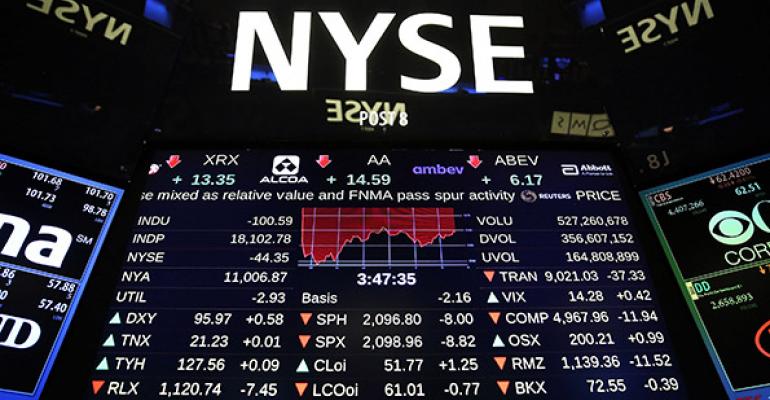By Rachel Evans
(Bloomberg) --The New York Stock Exchange is preparing to hand human traders a bigger role making markets for exchange-traded funds.
The exchange plans to allow bond, commodity and currency ETFs to list on its main floor as soon as August, according to Douglas Yones, NYSE’s head of ETFs. Last year, regulators approved the proposal, through which individuals known as designated market makers, or DMMs, will oversee ETF trading.
The funds currently reside on the company’s NYSE Arca exchange, an electronic venue powered by algo-driven traders known as lead market makers. While these firms commit to offering the best prices for a large part of the day, the lack of human involvement can leave less traded products struggling if a large order hits just as trading begins or ends, or there aren’t enough liquidity providers making a market at any given time.
“With a designated market maker, you don’t have that issue, you have a person,” Yones said in an interview. “The unique floor model lends itself very well to some potential benefits for the world of ETFs.”
ETFs with around $430 billion under management will be eligible to shift to the NYSE floor from Arca, according to data compiled by Bloomberg. Another $300 billion of funds at other exchanges will also be able to relocate, while new ETFs can list directly on the main exchange.
DMMs have a regulatory responsibility to be there all day, and set aside capital to matching incoming orders. That could appeal to issuers of new or less liquid ETFs that want to insulate their funds from market dislocations.
Winners, Losers
For NYSE, opening its two-centuries-old exchange to ETFs could generate extra revenue, as it competes with Cboe Global Markets Inc. and Nasdaq Inc. for ETF listings. NYSE hasn’t yet published its fees to list on the main exchange instead of on NYSE Arca.
The exchange’s five DMMs also stand to gain from the uptick in volume that ETFs could generate. But lead market makers, or LMMs, the firms that currently oversee ETFs on the electronic Arca platform, could lose out. Neither Jane Street Group nor Susquehanna International Group are DMMs, yet together they oversee about a third of ETFs listed on NYSE Arca.
Although electronic traders can make markets on the floor, they are less visible than DMMs, which also control the price when an equity starts and finishes trading for the day. That could encourage some LMMs to set up DMM businesses, if a significant number of ETFs opt to list on the main venue.
Still, that’s some way off. Some 79 percent of ETF assets are in stock funds that aren’t eligible to join the main exchange due to so-called line of sight rules that prohibit derivative products from trading in view of their underlying components. But market makers do expect to see demand from funds that are eligible.
“A lot of issuers would love to have a DMM manage their listing,” said Ari Rubenstein, chief executive at GTS, a NYSE DMM that recently agreed to buy Cantor Fitzgerald LP’s ETF business. “They love it because there’s lots of liquidity, efficiency and transparency for their investors, and ETF issuers are attracted to that.”
--With assistance from Nick Baker.To contact the reporter on this story: Rachel Evans in New York at [email protected] To contact the editors responsible for this story: Jeremy Herron at [email protected] Nick Baker, Brendan Walsh





